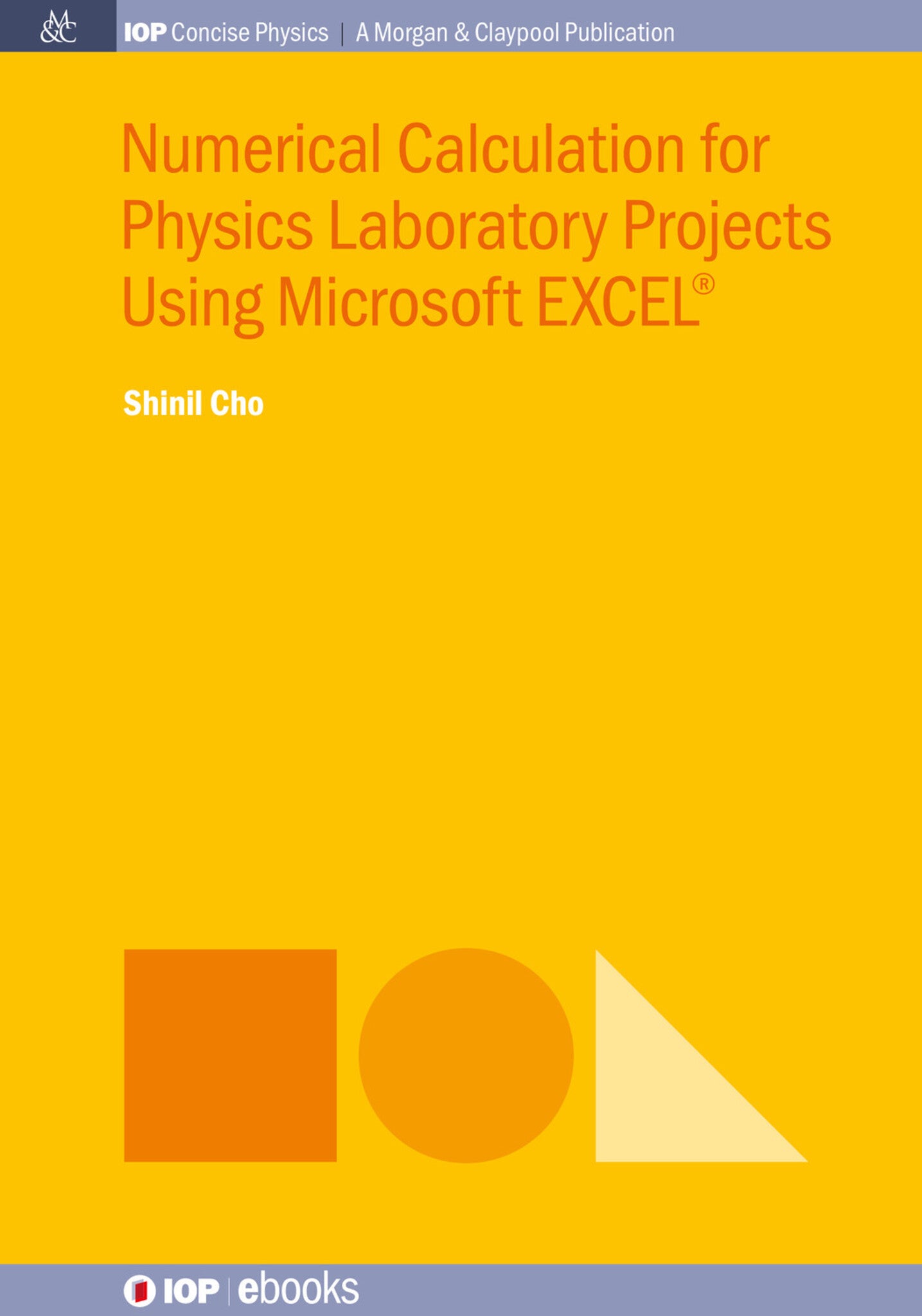We're sorry. An error has occurred
Please cancel or retry.
Numerical Calculation for Physics Laboratory Projects Using Microsoft EXCEL®

Some error occured while loading the Quick View. Please close the Quick View and try reloading the page.
Couldn't load pickup availability
- Format:
-
31 October 2019

This book may be used as a companion for introductory laboratory courses, as well as possible STEM projects. It covers essential Microsoft EXCEL® computational skills while analyzing introductory physics projects. Topics of numerical analysis include: multiple graphs on the same sheet, calculation of descriptive statistical parameters, a 3-point interpolation, the Euler and the Runge–Kutter methods to solve equations of motion, the Fourier transform to calculate the normal modes of a double pendulum, matrix calculations to solve coupled linear equations of a DC circuit, animation of waves and Lissajous figures, electric and magnetic field calculations from the Poisson equation and its 3D surface graphs, variational calculus such as Fermat’s least traveling time principle, and the least action principle. Nelson’s stochastic quantum dynamics is also introduced to draw quantum particle trajectories.

SCIENCE / Physics / Mathematical & Computational, Mathematical physics, SCIENCE / Physics / General, SCIENCE / Study & Teaching, Classical mechanics, Applied physics

1 Response time of nervous system
1.1 Objectives
EXCEL note
1.2 Theory and procedure
1.3 Data analysis
1.3.1 Histogram
1.3.2 Another histogram available in EXCEL
1.3.3 Statistical variables
1.3.4 Calculation of statistical variables
1.4 Central limit theorem
1.4.1 Gaussian curve fitting to raw data
1.4.2 Uniform distribution and the central limit theorem
References
2 Constant acceleration motion
2.1 Objectives
EXCEL note
2.2 Theory and procedure
2.3 Data analysis
2.3.1 Displacement vrs time graph
2.3.2 Displacement vrs time2 graph
2.3.3 Velocity vrs time graph
3 Equation of Motion
3.1 Objectives
EXCEL note
3.2 Theory and procedure
3.2.1 Projectile motion
3.3 Data analysis
3.4 Solving equation od motion using the Euler method
3.4.1 The Euler method for projectile motion
3.4.2 A falling object with air resistance using the Euler method
3.5 Rung-Kutter method
3.5.1 Limitation of the Euler method
3.5.2 Algorithm of the Runge-Kutter method
3.5.3 Harmonic oscillator
3.5.4 Van der Pool equation
3.6 Runge-Kutter method for simultaneous ordinary differential equations
3.6.1 Algorithm
3.6.2 Planetary motion
References
4 Periodic motions
4.1 Objectives
EXCEL note
4.2 Theory and Procedure
4.3 Data analysis
4.4 Further investigation – minimum period of a physical pendulum
4.5 More periodic motions
4.5.1 Double pendulum
4.5.2 Fourier transform
4.5.3 Coupled Oscillators
References
5 Lissajous Figures
5.1 Objectives
EXCEL note
5.2 Theory and procedure
5.3 Lissajous figures using EXCEL
5.4 Animation of graphs
5.4.1 Idea of animating EXCEL chart
5.4.2 A propagating sine-wave
5.4.3 Rotating Lissajous figures
References
6 Kirchhoff’s law
6.1 Objectives
EXCEL note
6.2 Theory and procedure
6.3 Circuit under measurement
6.3.1 Matrix calculation using EXCEL
6.4 Data analysis
7 Equipotential surface
7.1 Objectives
EXCEL note
7.2 Measurement
7.3 Data Analysis
7.3.1 3D Surface Graph
7.3.2 Calculation of 3D equipotential surface of an electric dipole
7.4 Further investigation
7.4.1 Two-dimensional electric potential from Poisson equation
7.4.2 Two-dimensional electric field from electric potential
7.4.3 Spreadsheet for calculating electric dipole field
7.4.4 Graphical representation of electric field
References
8 Magnetic field profile
8.1 Objectives
EXCEL note
8.2 Theory and Procedure
8.3 Measurement
8.4 Additional study
8.4.1 Magnetic field calculated from vector potential
8.4.2 Vector potential and magnetic field due to a pair of current wire
8.4.3 Graphical representation of the magnetic field from a pair of current wires
References
9 Law of refraction
9.1 Objectives
EXCEL note
9.2 Theory and procedure
9.3 Data analysis
9.3.1 Angle measurement
9.3.2 Fermat’s least traveling principle using EXCLE’s Solver
9.4 Projectile motion based on the least action principle
9.4.1 Lagrangian approach
9.4.2 Projectile motion
9.5 Eigen value problems using Solver
9.5.1 Eigenvalues of Strum-Liouville equation
9.5.2 Example
References
10 Quantum particle trajectories
10.1 Objectives
EXCEL note
10.2 Theory – Nelson’s approach
10.3 Analysis of quantum particle trajectories
10.3.1 One-dimensional free particle
10.3.2 One-dimensional potential barrier
10.3.3 Harmonic oscillator
10.3.4 Hydrogen atom
References
Appendix
A1. EXCEL options
A1.1 Autofill
A1.2 Adding “Data Analysis”
A1.3 Enabling VBA macro
A1.4 Recording macro code
A1.5 Enabling iterative calculation
A1.6 Generating Gaussian random numbers
A2. Calculation of firing speed of a rolling ball
A3. RLC oscillator circuit
A4. Another circuit for exercising Kirchhoff’s law
A5. Macro codes for quantum particles
References



